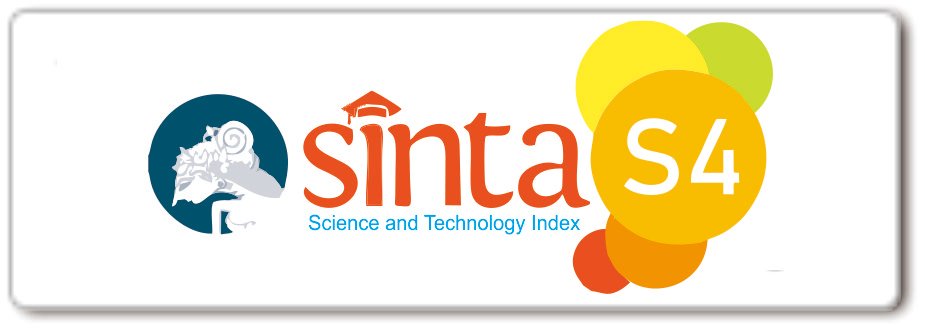HEMANGIOMA INFANTIL
DOI:
https://doi.org/10.33820/mdvi.v49i1.364Keywords:
hemangioma infantil, neoplasma vaskular, propanolol, timolol maleatAbstract
Infantile hemangiomas (IH) are the most common benign vascular tumors in infancy and childhood. Hemangiomas may be present at birth, but most develop in the ï¬rst few weeks after birth. Classification is used to differentiate the location of the lesion namely superficial, deep or mixed type. The pathogenesis of HI has not yet been fully explained. Although it is still under debate, it is concluded that placental angioblast embolic or intrinsic endothelial progenitor cells have the ability to proliferate clonal under the influence of appropriate cytokines. Infantile hemangiomas are distinguished from other vascular tumors and malformations by their unique growth pattern (rapid proliferative phase with subsequent slower involution. Studies have shown that in the proliferative phase, there is an imbalance of angiogenic and vasculogenic. As hemangioma could regress spontaneously, it generally does not require treatment unless proliferation interferes with normal function or gives rise to risk of serious disï¬gurement. Severe cases that require treatment are considered due to location or distribution, life threatening (subglottic, multifocal with visceral involvement), impaired function (periorificial), causing severe ulceration and bleeding (lumbosacral, genital) or risk of permanent disability (central facial, breast). Historic treatment options for IH include corticosteroids, beta blockers, surgery, lasers, or a combination of these therapies.
Downloads
References
2. Anderson KR, Schoch JJ, Lohse CM, Hand JL, Davis DM, Tollefson MM. Increasing Incidence of Infantile Hemangiomas over the Past 35-years: Correlation with Decreasing Gestational Age at Birth and Birth Weight. J Am Acad Dermatol [Internet]. 2016 [dikutip 29 September 2021];74:120. Tersedia pada: /pmc/articles/PMC4994883/
3. Muneeb Mubashir M, Kumar A, Ohri N, Gupta N. A Case Report on Infantile Hemangioma Chandigarh 2 Senior Resident, OHSC PGIMER Chandigarh. 3 Senior Resident, RPGMC Tanda Himachal Pradesh 4 Ex. Resident, GDCRI Bangalore. Int J Heal Sci Res [Internet]. 2018;8:11. Tersedia pada: www.ijhsr.org
4. Darrow DH, Greene AK, Mancini AJ, Nopper AJ. Diagnosis and Management of Infantile Hemangioma. Pediatrics. 2015;136(4):e:1060–104.
5. Lydiawati E, Zulkarnain I. Infantile Hemangioma: A Retrospective Study. BIKKK. 2020;32(1):21-6.
6. Seiffert A, Schneider M, Roessler J, Larisch K, Pfeiffer D. Incidence, Treatment Patterns, and Health Care Costs of Infantile Hemangioma: Results of a Retrospective German Database Analysis. Pediatr Dermatol. 2017;34(4):450-7. Burhan H, Hasan Kazmi SM, Lateef N, Ansari AB, Shah M. Infantile haemangiomas; a review on treatment modalities. Int J Hematol Ther. 2017;3(3):1-5.
8. Nip SYA, Hon KL, Leung WKA, Leung AKC, Choi PCL. Neonatal Abdominal Hemangiomatosis: Propranolol beyond Infantile Hemangioma. Case Rep Pediatr. 2016;2016:1-4.
9. Kryatova MS, Rainer BM, Zhao J, Villarroel VA, Yasmine Kirkorian A, Grossberg AL, dkk. Retrospective Study of Nasal Infantile Hemangiomas: Characteristics, Complications, and Outcomes. Pediatr Dermatol. 2016;33(6):652-8.
10. Rotter A, de Oliveira ZNP. Infantile hemangioma: pathogenesis and mechanisms of action of propranolol. JDDG. 2017;15:1185–90.
11. Higgins E, Glover M. Dermatoses and hemangiomas of infancy. In: Griffiths C, Barker J, Bleiker T, Chalmers R, Creamer D, editor. Rook’s Textbook of Dermatology. 9th ed. New Jersey: WILEY Blackwell; 2016. hal. 117.16-117.23.
12. Shalima M, Fitriani S. Sindrom PHACE(S). MDVI. 2015;42:186–92.
13. Smith CJF, Friedlander SF, Guma M, Kavanaugh A, Chambers CD. Infantile Hemangiomas: An Updated Review on Risk Factors, Pathogenesis, and Treatment. Birth Defects Res. 2017;109(11):809-15.
14. MacArthur K, Puttgen K. Vascular tumors. Dalam: Kang S, Amagai M, Bruckner A, Enk A, Margolis D, McMichael A, dkk., penyunting. Fitzpatrick’s Dermatology. Edisi ke-9. New York: McGraw Hill Medical; 2019. h. 2042–58.
15. Krowchuk DP, Frieden IJ, Mancini AJ, Darrow DH, Blei F, Greene AK, dkk. Clinical Practice Guideline for the Management of Infantile Hemangiomas. Pediatrics. 2019;143(1):e20183475.
16. Tiemann L, Hein S. Infantile Hemangioma: A Review of Current Pharmacotherapy Treatment and Practice Pearls. J Pediatr Pharmacol Ther. 2020;25(7):586-99.
17. Babiak-Choroszczak L, Giżewska-Kacprzak K, Gawrych E, Fischer K, Walecka A, Puchalska-Niedbał L, dkk. Serum concentrations of VEGF and bFGF in the course of propranolol therapy of infantile hemangioma in children: Are we closer to understand the mechanism of action of propranolol on hemangiomas? Adv Clin Exp Med. 2018;27(5):703-10.
18. Ricci K. Advances in the Medical Management of Vascular Anomalies. Semin Intervent Radiol. 2017;34:239-49.
19. Ariwibowo L, Radiono S, Danarti R. Evaluasi terapi kortikosteroid topikal ultrapoten dan solusio timolol maleat 0,5% terhadap ukuran hemangioma infantil superfisial. MDVI. 2017;44:2–7.














